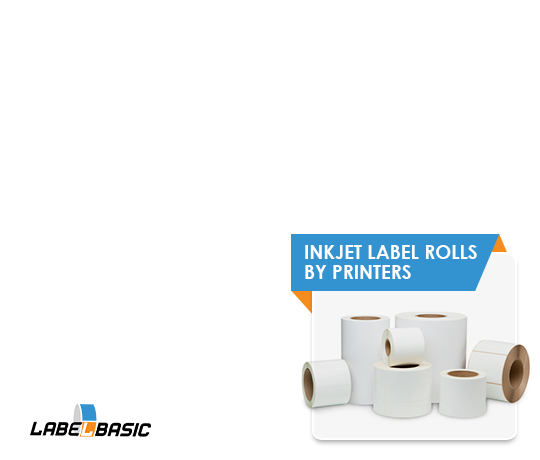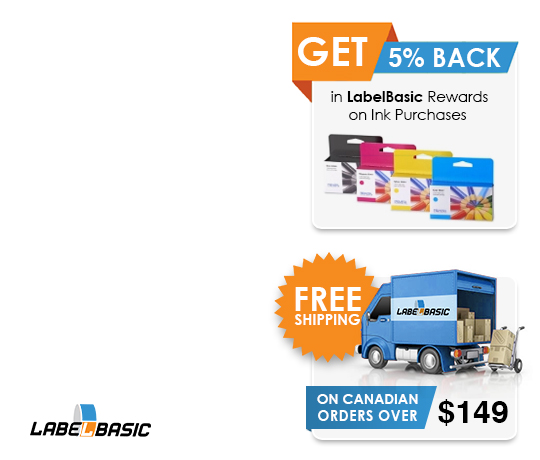The Environmental Impact of Color Label Printing: How to Go Green
In recent years, sustainability has become a growing concern for businesses worldwide. As environmental awareness increases and consumers become more environmentally conscious, businesses are recognizing the need to adopt sustainable practices to meet customer expectations, protect the planet, and ensure long-term success. By incorporating eco-friendly strategies into various aspects of their operations, businesses can not only reduce their environmental footprint but also enhance their brand image, attract eco-minded customers, and gain a competitive edge in the market.
Color label printing, while essential for product marketing and branding, can have a significant environmental impact. This impact comes from various factors, including the consumption of natural resources (e.g., paper, ink, and energy), the generation of waste (e.g., discarded labels, packaging materials, and empty ink cartridges), and the release of potentially harmful chemicals and emissions during the production and disposal of label materials. To minimize this impact, it is crucial for businesses to adopt more sustainable label printing practices.
Choosing Sustainable Label Materials
One of the most effective ways to reduce the environmental impact of color label printing is by choosing eco-friendly label materials. Opting for recycled materials, such as post-consumer waste paper or paper made from alternative fibers (e.g., hemp, bamboo, or agricultural waste), can help decrease the consumption of natural resources, reduce waste, and lower greenhouse gas emissions. Additionally, look for sustainably sourced materials that come from responsibly managed forests or plantations, ensuring that your labels do not contribute to deforestation or habitat destruction. Look for certifications such as the Forest Stewardship Council (FSC) or Programme for the Endorsement of Forest Certification (PEFC) to guarantee that the materials you choose are sustainably sourced.
Another way to minimize the environmental impact of your labels is by selecting biodegradable or compostable materials. Biodegradable labels break down naturally over time, reducing the amount of waste that ends up in landfills or the environment. Compostable labels, on the other hand, are designed to decompose in composting conditions, providing valuable nutrients to the soil and promoting a circular economy. These eco-friendly materials can be made from a variety of natural sources, such as cornstarch, PLA (polylactic acid), or cellulose-based materials, and are suitable for a wide range of applications.
Using thinner label materials can help reduce the overall consumption of resources and decrease the amount of waste generated during the printing process. Thinner materials often require less energy to produce and transport, resulting in a lower carbon footprint. Furthermore, they can contribute to waste reduction, as thinner labels typically occupy less space in landfills when discarded. When selecting thinner label materials, ensure that they still meet your requirements for durability, print quality, and adhesion, as these factors are critical for maintaining the effectiveness and appearance of your product labels.
Energy-Efficient Color Label Printers
The energy consumption of your color label printers plays a significant role in your overall environmental impact. Energy-efficient printers consume less electricity during operation, which helps reduce greenhouse gas emissions and contributes to a lower carbon footprint for your business. Furthermore, energy-efficient printers can also help you save on operational costs by lowering your energy bills. By investing in energy-efficient color label printers, you are not only making a positive impact on the environment but also promoting cost-effective and responsible business practices.
When shopping for an energy-efficient color label printer, consider the following features:
Energy Star certification: This certification, provided by the U.S. Environmental Protection Agency (EPA), ensures that the printer meets strict energy efficiency guidelines. Energy Star-certified printers consume less energy during operation and often have additional features, such as automatic sleep modes or energy-saving settings, that help reduce power consumption further.
Automatic duplex printing: Printers with automatic duplex printing capabilities can print on both sides of the label or paper, reducing material usage and waste.
Variable print speed settings: Printers with adjustable print speeds can help you control energy consumption by allowing you to choose a slower, more energy-efficient printing speed when high-speed printing is not necessary.
Low standby power consumption: Look for printers with low standby power consumption, as they
Maintaining your color label printer properly can also contribute to its energy efficiency and help prolong its lifespan. Here are some maintenance tips to ensure your printer operates at peak efficiency:
Keep your printer clean: Regularly clean the printer’s exterior, printhead, and other components to prevent dust and debris buildup, which can affect performance and energy consumption.
Update firmware and drivers: Keep your printer’s firmware and drivers up-to-date to ensure it operates efficiently and takes advantage of any energy-saving improvements provided by the manufacturer.
Replace consumables in a timely manner: Monitor ink and toner levels and replace them as needed to prevent the printer from working harder than necessary and consuming more energy.
Perform regular maintenance: Follow the manufacturer’s recommendations for routine maintenance, such as replacing parts or servicing the printer, to keep it running optimally and efficiently.
By investing in energy-efficient color label printers and maintaining them properly, you can significantly reduce your environmental impact while also enjoying the benefits of cost savings and responsible business practices.
Waste Reduction Strategies
Minimizing waste during the design and printing process can significantly reduce the environmental impact of your color label printing. Here are some tips to help reduce label waste:
Optimize label design: Ensure that your label design uses space efficiently and minimizes the need for excess material. For example, consider using a smaller font or adjusting the layout to accommodate more information on a smaller label size.
Use digital proofs: Before printing a large batch of labels, review your design using digital proofs to catch any errors or make necessary adjustments. This can help prevent the need to reprint labels due to design mistakes.
Print test runs: Conduct small test runs to fine-tune printer settings, such as color calibration and alignment, before printing the final batch. This can help minimize waste resulting from misprints or color inconsistencies.
Adopting a print-on-demand strategy can significantly reduce label waste by allowing you to print only the necessary quantity of labels as needed. This approach helps prevent overproduction and the subsequent disposal of unused or outdated labels. Some benefits of a print-on-demand strategy include:
Reduced inventory: With print-on-demand, you can maintain a smaller inventory of labels, reducing storage space requirements and the risk of waste due to obsolescence or damage.
Greater flexibility: Printing labels on demand allows you to easily make updates or changes to your label designs without the need to discard a large inventory of pre-printed labels.
Cost savings: By printing only the required number of labels, you can potentially save on material and storage costs.
Recycling used labels and packaging materials is an essential part of waste reduction in the color label printing process. Here are some steps to ensure proper recycling:
Choose recyclable materials: Opt for label materials that are widely accepted by recycling facilities, such as paper or certain types of plastic. Ensure that any adhesives or coatings used on the labels are also recyclable or can be easily removed during the recycling process.
Educate customers: Provide clear instructions on your packaging or marketing materials about how to properly remove and recycle labels, as well as any associated packaging materials.
Collaborate with recycling partners: Work with recycling facilities or waste management companies to ensure that your used labels and packaging materials are appropriately processed and recycled.
By implementing waste reduction strategies, such as optimizing label designs, adopting a print-on-demand approach, and recycling used labels and packaging materials, businesses can significantly reduce their environmental impact while also promoting cost-effective and responsible practices.
In conclusion, adopting eco-friendly strategies in color label printing is essential for businesses aiming to reduce their environmental impact, meet customer expectations, and ensure long-term success. By choosing sustainable label materials, using environmentally-friendly inks, investing in energy-efficient printers, and implementing waste reduction strategies, businesses can significantly lower their environmental footprint. Additionally, these practices can enhance brand reputation, attract environmentally conscious customers, and contribute to cost savings. Embracing sustainability in color label printing is not only a responsible choice but also a smart business decision that can lead to a positive impact on both the environment and your bottom line.





